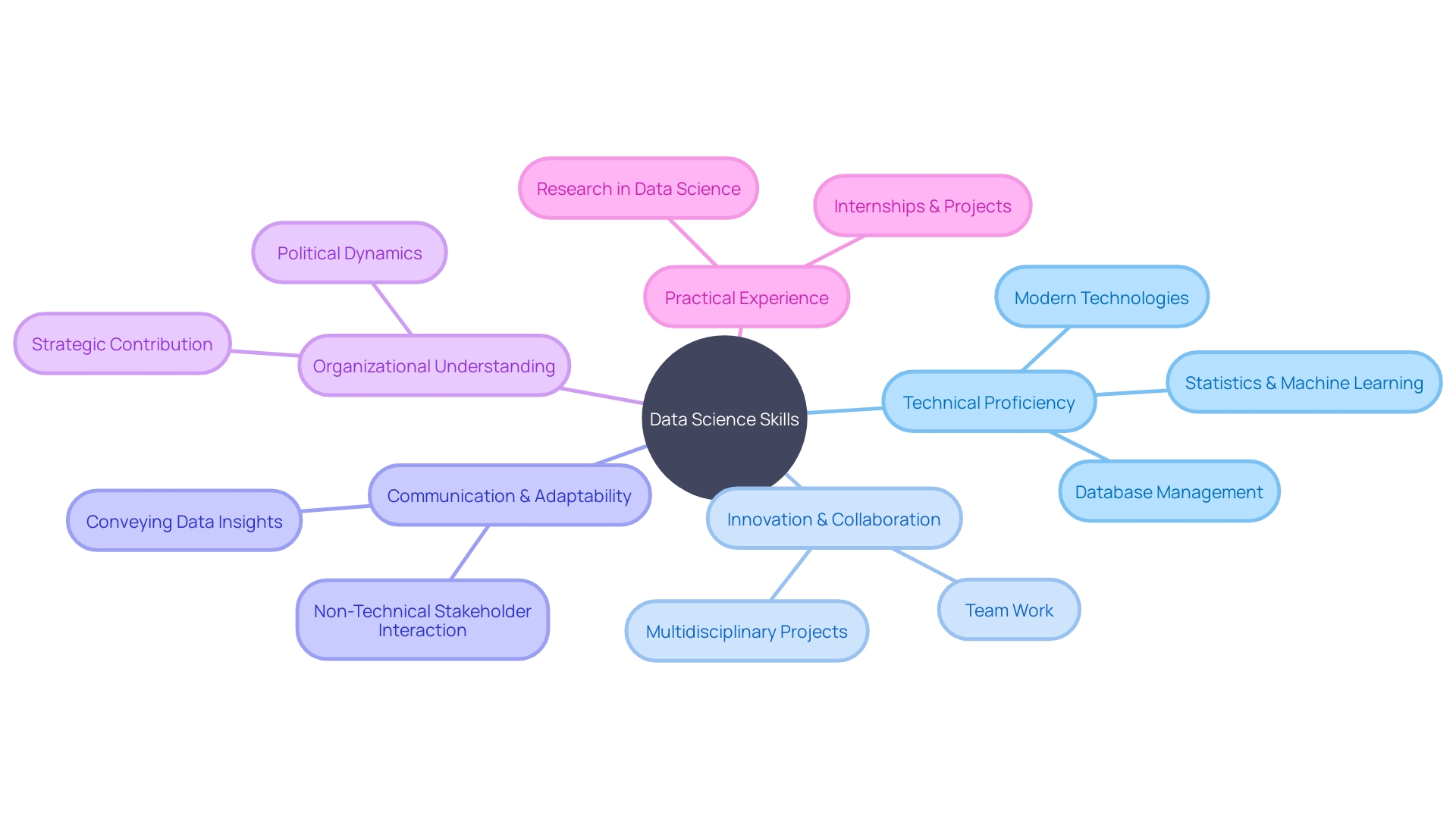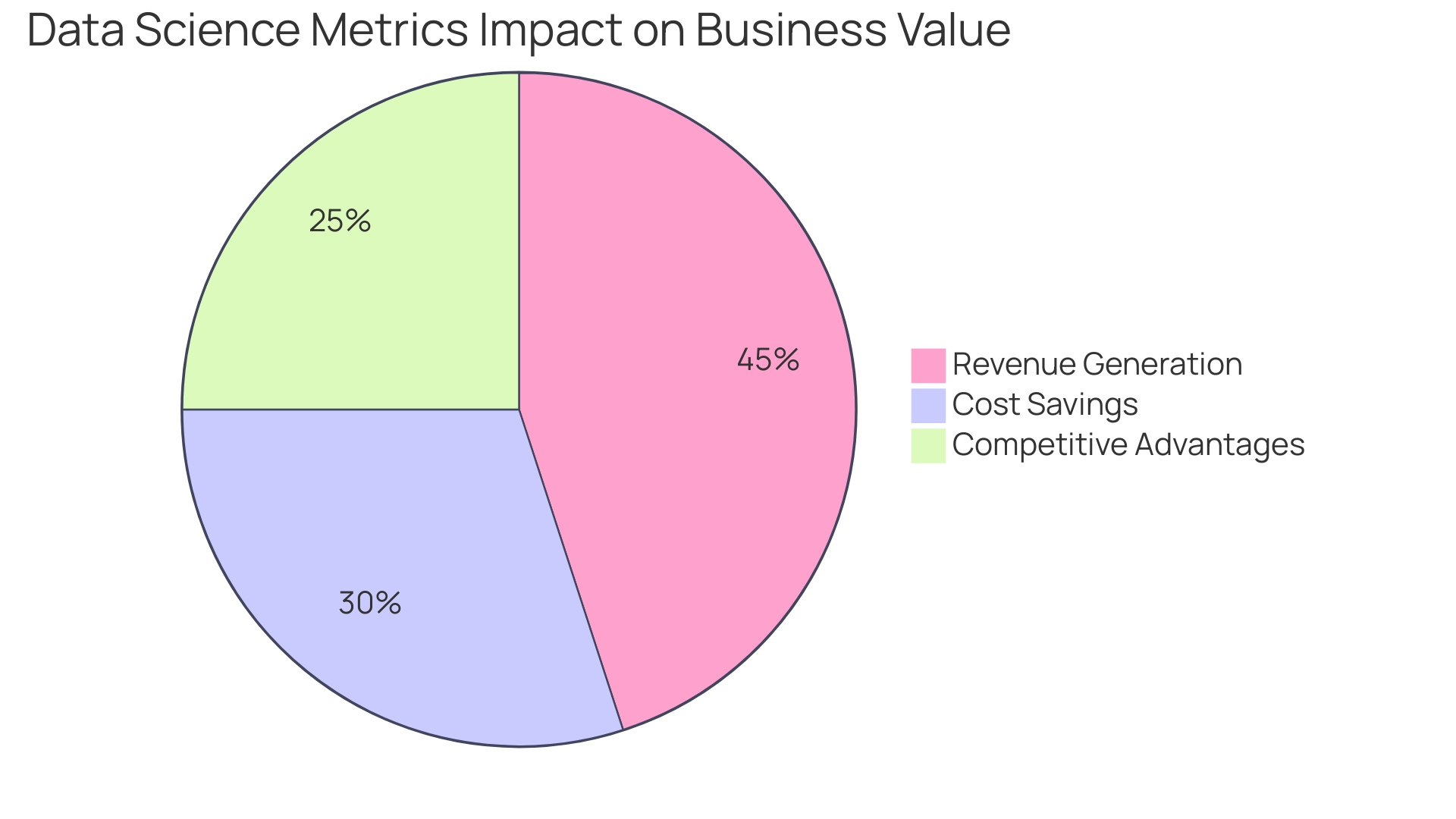Introduction
Crafting a data science strategy goes beyond managing data; it involves transforming data into actionable insights that align with business objectives. In this article, we will explore the key elements of a data science strategy and the importance of data democratization.
We will also discuss how to identify and prioritize data use cases, the technology and infrastructure needed for data science, building an effective data science team, and measuring success and ROI in data science. Join us as we delve into the world of data science strategy and discover how it can drive business growth and innovation.
Defining a Data Science Strategy
Crafting a data science strategy is not merely about managing data; it's about transforming that data into actionable insights that align with your business objectives. The first critical step is identifying the data-driven use cases that will significantly impact your organization. You can begin with a focused domain or business line, carefully selecting use cases that serve as the mechanisms to execute your broader organizational strategy.
To develop a robust inventory of these use cases, combine insights from internal business and analytics leaders with external sources tailored to your sector. This hybrid approach ensures relevant and impactful applications of data science, directly contributing to your strategic goals. As the world increasingly recognizes the power of data in driving successful decisions, data scientists are called to first understand the primary purpose behind the data being collected.
Knowing this purpose is essential for asking the right questions and conducting accurate analysis. With this foundation, IT plays an integral role in setting up and maintaining data pipelines, managing cloud resources, and allocating computational power efficiently. This judicious management of resources prevents wastage and cuts costs, enabling data science teams to innovate and work more efficiently.
Leadership, including CIOs and heads of data departments, must underscore the importance of systematic and focused implementation, setting clear objectives, and tracking progress. It's vital to remember that there is no artificial intelligence without data. Investments in building a solid data foundation are crucial for AI applications to function effectively.
By automating routine tasks, data scientists are free to tackle more complex challenges, driving innovation and business growth. With data science's predictive models, businesses can enhance customer acquisition and retention rates, as evidenced by a case study that saw a 30% improvement in client acquisition and a 40% increase in client retention. This is the power of data science—a strategic enabler for business growth and innovation.
Key Elements of a Data Science Strategy
In the dynamic realm of data science, a robust strategy is not just about selecting the right models or mastering the latest algorithms. It's about fostering a culture of collaboration between data scientists and end-users, ensuring that data not only shapes strategy but also aligns with business objectives. Central to this is the concept of data democratization, where the goal is to empower individuals across the organization to utilize data effectively.
A well-structured data science project iterates through phases of data collection and preprocessing, with a keen focus on accuracy and usability. Data cleaning is pivotal, as it reduces errors and enhances the analysis, leading to insights that drive profitable decisions. Moreover, efficient data storage and strict governance are essential, especially in light of recent data compliance laws like the Texas consumer privacy law (TDPSA).
Projects often require revisiting plans and refining processes, as noted by the key role of the project manager in navigating through feedback loops. This iterative approach, underpinned by clear goals and metrics, is exemplified by Airbnb's inclusion of data scientists on leadership teams, ensuring that every decision is data-informed from the outset. As we look forward to the trends and developments in AI, resources like Kaggle provide valuable experience in the field, reinforcing the practical application of a sound data strategy.
Data Use Cases and Prioritization
To optimize your data science strategy, it is crucial to identify and prioritize data use cases that align closely with your business objectives. By scrutinizing your own data, you can unlock invaluable insights into customer behavior, market trends, and operational efficiencies that inform data-driven strategies. These strategies bolster resource allocation, product development, and marketing initiatives, fostering a culture that emphasizes evidence-based decision making.
However, the path to actionable insights is not without its challenges. Data quality issues such as missing or inaccurate records can impede analysis, and gaps in domain expertise could lead to misinterpretation of data. Resource constraints may also restrict the scope of projects or limit access to necessary tools and talent.
Ethical considerations around privacy and bias require meticulous attention, and as the business landscape evolves, so too must your data science projects to maintain relevance. Incorporating real-world case studies into your strategy can provide a solid foundation for decision-making by demonstrating the tangible impact of data science. Moreover, it is essential to construct a robust data infrastructure to support these initiatives and to ensure continuous monitoring and improvement.
This approach not only keeps insights relevant but also helps comply with privacy and regulatory requirements, thereby mitigating legal and financial risks. Remember, the healthiest data landscapes are those where data ownership is unequivocal. By establishing clear data governance, you can enhance the quality and reliability of your data analysis, ensuring that your data science endeavors yield the most significant benefit for your company.
Technology and Infrastructure for Data Science
When crafting a data science strategy, the selection of technology and infrastructure is a pivotal step that directly impacts the scalability, efficiency, and compatibility of analytics operations. Utilizing robust programming languages like Python or R and machine learning frameworks such as TensorFlow or PyTorch is vital.
Additionally, cloud-based platforms are instrumental in data storage and processing, providing the necessary infrastructure to handle large datasets and complex algorithms. In the realm of unstructured text analytics and image recognition, automating the classification and tagging of data is essential, making analysis more efficient.
The advancements in cloud computing platforms represent a leap forward in our ability to process and analyze unstructured data, turning it into actionable insights. The velocity at which data evolves necessitates powerful infrastructures for efficient analysis.
Cloud services offer scalable solutions without the cost and complexity of local IT infrastructure, allowing data scientists to focus on innovation rather than resource limitations. Case studies illustrate the effectiveness of these approaches.
Wintershall Dea, under the leadership of Kathrin Dufour and Ulrich Lorang, leveraged a centralized platform for data science, enhancing collaboration within their partner ecosystem. Meanwhile, a data science platform anchored by Apache Airflow empowered scientists to independently develop and deploy code, validating algorithms on extensive datasets. Recent developments, like Meta's update to the AI system for Ray-Ban smart glasses, underscore the importance of cutting-edge technology in creating scalable solutions that can adapt to real-time information needs. The weekly AI updates from KDnuggets highlight the dynamic nature of AI and the need for continuous learning and adaptation in this field. Supporting this, Chet Kapoor of DataStax emphasizes the importance of real-world experience and the need for real products to solve real problems, reflecting the close interplay between AI, data science, and infrastructure. The global data center industry, valued at approximately $250B and expected to double in the next seven years, showcases the significance of selecting the right technology stack for data science initiatives.
Building a Data Science Team
To excel in data science, it's essential to not only be proficient in modern technologies such as cloud computing, AI, and tools like FastAPI but also to remain agile in an evolving tech landscape. Assembling a data science team with diverse skills, including data scientists, data engineers, and domain experts, is fundamental. Candidates should demonstrate proficiency in statistics, machine learning, and programming, coupled with the ability to innovate and collaborate effectively within the team.
In recruiting, consider giving a coding challenge to evaluate alignment with best practices and understanding of their analytical approach. Moreover, encourage candidates to discuss their previous projects, focusing on their specific roles, contributions, and the measurable outcomes they achieved, particularly how their work influenced key performance indicators and added value to the business. It's also vital to foster a team culture that values clear communication and adaptability.
Data scientists are often required to present their findings and work with various stakeholders, making interpersonal skills as crucial as technical expertise. As highlighted by the Stack Overflow 2023 Developer Survey, which introduced an AI section, adapting to new developments in the field is crucial for staying relevant. Lastly, understanding the political dynamics within an organization is critical for aligning stakeholders and ensuring project success, avoiding duplication of efforts, and fostering organizational readiness.

Measuring Success and ROI in Data Science
To truly gauge the efficacy of your data science strategy, it's crucial to not only define KPIs that resonate with your business goals but also to ensure these metrics are crafted and interpreted by individuals who possess a deep understanding of your business. These experts can translate complex data into actionable business insights, test hypotheses about causal relationships, and choose the right analytical tools for the job—avoiding situations where teams are simply mining data without direction. For instance, a frequent request for raw data might indicate that current tools are inadequate for the task at hand.
It's about striking a balance: aligning data science with business priorities and focusing on metrics that drive real value, such as cost savings, revenue generation, and competitive advantages. By doing so, you'll be able to measure profitability in terms of tangible business impacts, earning more trust and investment in your data initiatives. Moreover, with the average salary for data scientists at $124,000 per year, according to indeed.com, it's clear that investing in the right talent is essential for interpreting and leveraging your data effectively.

Conclusion
Crafting an effective data science strategy involves transforming data into actionable insights that align with business objectives. This requires identifying and prioritizing data-driven use cases, fostering a culture of collaboration through data democratization, selecting the right technology and infrastructure, building a skilled data science team, and measuring success using relevant metrics.
Data democratization empowers individuals across the organization to utilize data effectively, shaping strategy and driving profitable decisions. Selecting robust technology and infrastructure, such as Python or R programming languages and cloud-based platforms, ensures scalability and efficiency in analytics operations.
Building a successful data science team requires diverse skills in statistics, machine learning, programming, innovation, and collaboration. Clear communication and adaptability are also vital for presenting findings effectively.
Understanding the political dynamics within an organization ensures alignment with stakeholders and project success. Measuring success in data science involves defining KPIs that resonate with business goals. By focusing on metrics that drive real value, businesses can earn more trust and investment in their data initiatives. In conclusion, crafting an effective data science strategy involves identifying use cases aligned with business objectives, promoting data democratization, selecting appropriate technology infrastructure, building a skilled team, and measuring success using relevant metrics. By following these principles, businesses can harness the power of data science to drive growth and innovation.





